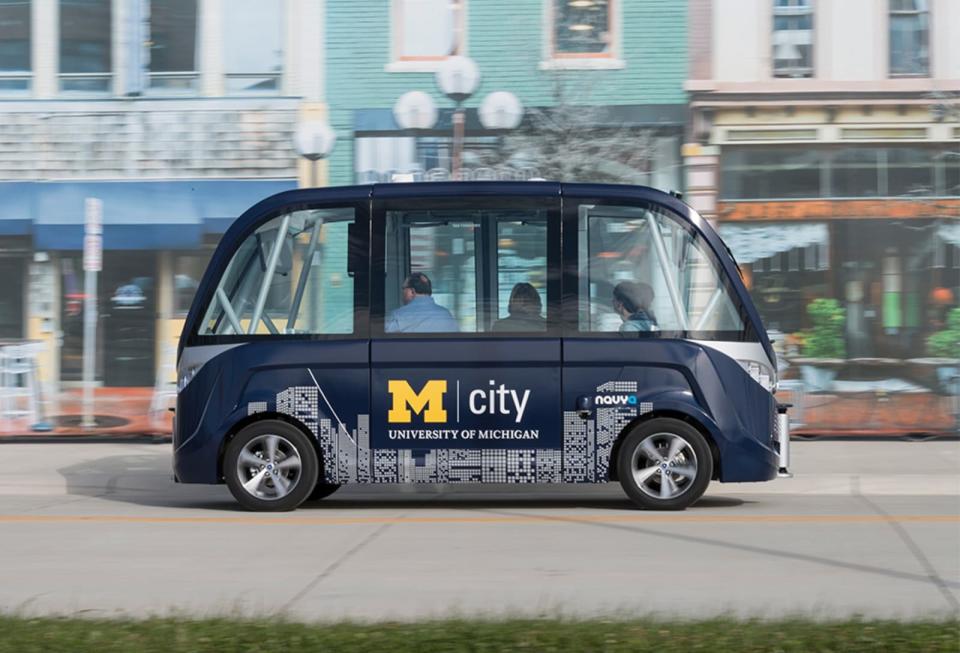Self-driving cars are safer when they talk to each other
Mcity is using augmented reality to test their vehicle to vehicle communication.
Most current self-driving technology relies on cameras, radar and lidar. These sensory devices serve as eyes for the car, mimicking what a human driver can see. But a University of Michigan public-private partnership called Mcity is testing V2V, or vehicle to vehicle communication, and has found that it makes their autonomous prototypes even safer.
V2V works by wirelessly sharing data such as location, speed and direction. Using DSRC, or Dedicated Short Range Communication, V2V can send up to 10 messages per second. This communication allows cars to see beyond what is immediately in front of them -- sensing a red light around a blind curve, or automatically braking for a car that runs a stop sign.
Mcity is also using a new augmented reality system to test their cars equipped with V2V. They've created virtual vehicles equipped with the technology that can communicate with their actual prototypes. This allows them to test scenarios that are cost-prohibitive or too dangerous for real-world trials.
The catch of V2V? It has to be installed in the majority of cars and infrastructure (such as traffic lights) to function adequately. Regardless, anything that gets us closer to safe, reliable autonomous cars is a win, so it will be interesting to see how this tech develops.



